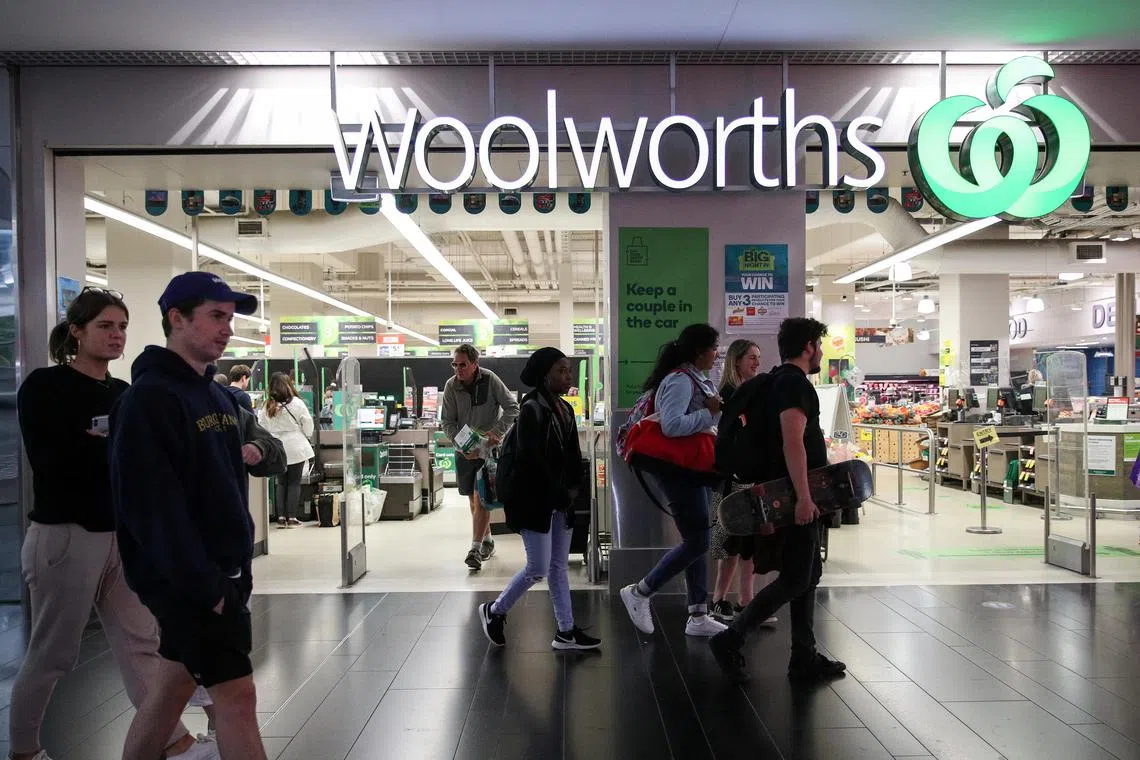Prices in Australia leave shoppers stunned as inflation surges
Sign up now: Get ST's newsletters delivered to your inbox

Australia’s annual inflation rate has been steadily increasing for a year and has now reached 7.8 per cent, the highest level since 1990.
PHOTO: REUTERS
Follow topic:
SYDNEY - A shopper in a Melbourne supermarket recently bought a packet of his favourite chips and was stunned by the price tag of A$7.60 (S$7.07) – 71 per cent higher than only two years ago.
In a country whose residents are still in a collective state of shock at the fast-rising prices of everyday items, the shopper posted an image of the item and its price on social media. The post prompted a flurry of anger, including demands to boycott the supermarket and the brand of chips.
“This is robbery,” said one comment on the Reddit website.
“Are they gold-plated?” said another.
The outrage against the everyday impact of Australia’s soaring inflation rate is not surprising.
In 2020, three staple food items – a tub of butter, a packet of sliced cheese (24 slices) and a kilogram of lamb – at supermarket chain Coles would have cost A$27.50 in total. Today, the same items go for A$37.20, an increase of 35 per cent.
Australia’s annual inflation rate has been steadily increasing for a year and reached 7.8 per cent in the last quarter of 2022,
The federal government has described the inflation problem as the “defining challenge” of the nation’s economy.
“I recognise that people are doing it tough,” Prime Minister Anthony Albanese told a radio interviewer on Thursday. “Right around the world, we have this massive inflation problem... Australia is not immune.”
Unfortunately, there are emerging signs that Australia’s inflation problem may be more entrenched – or “sticky” – than was originally assumed.
The rise in prices has now spread beyond cars or energy, which were directly affected by the Ukraine war or by supply chain problems due to the Covid-19 pandemic.
Official figures released last week indicate that the inflation scourge has extended to tourism, insurance and financial services.
An economist at jobs portal Indeed, Mr Callam Pickering, told ABC News that the latest inflation figures are “nasty” and that cost-of-living pressures are set to cause considerable hardship to households in 2023.
“Persistent inflation of this nature and the monetary policy response required to contain it aren’t often consistent with economic growth,” he said.
The inflation figures have raised expectations that Australia’s central bank – the Reserve Bank – will lift interest rates again at its board’s meeting on Feb 7.
The bank has already imposed the quickest rate hikes in decades, from 0.1 per cent last May to 3.1 per cent.
A senior Reserve Bank official, Dr Marion Kohler, told a Senate hearing this week that more than 800,000 loans in Australia worth about A$350 billion will shift from low fixed rates to high variable rates over the coming year.
This so-called “fiscal cliff” will leave many people suddenly facing huge increases in their repayments, just as the cost of living soars.
“We understand that some people are finding the rise in interest rates difficult to manage and others will have to cut back on discretionary spending,” Dr Kohler told the hearing.
The soaring inflation has led to a growing demand for second-hand goods and even sewing classes, so people can make their own clothes.
Growing numbers of people are requesting support from charities, and supermarket chains have introduced price freeze programmes, in which they promise to lock prices of selected items for several months.
But the price shocks seem likely to continue.
Recently, a shopper posted an image of six bananas, a 2-litre bottle of milk and a loaf of sourdough bread with the comment: “A$12.50 in 2023”. The post generated more than 1,700 comments – including recommendations to buy cheaper bread.


